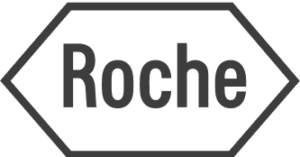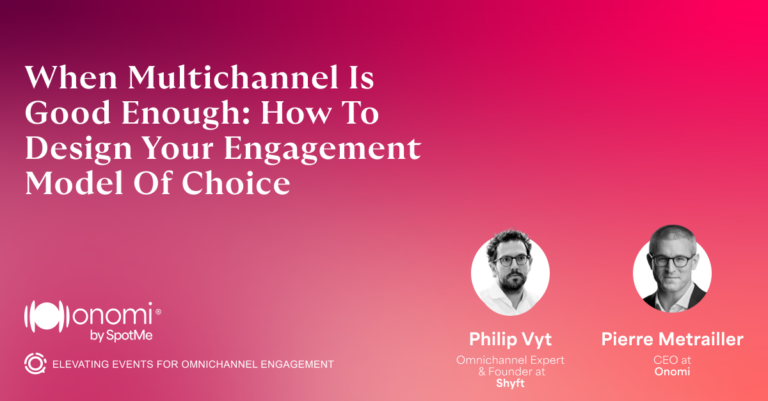Designing Engagement That Works: How to Move Beyond One-Size-Fits-All Omnichannel
“If you want to achieve omnichannel, you cannot just say, “let’s do omnichannel in EMEA,” and then expect that Germany acts in the same way as the Nordics or Italy.
It’s not the same once you go beyond the barrier of the region to the country level.”
Philip Vyt, Omnichannel Strategist
Summary
Most life sciences companies are chasing omnichannel. But if you ask the teams on the ground, you will hear a different story. Leadership wants to scale, but execution stalls. Strategies look aligned on paper, but fall apart in local markets. The biggest misconception? That there is one omnichannel model that can work for every brand, region, or team.
In this session, Onomi CEO Pierre Metrailler sat down with Philip Vyt, founder of Shyft and omnichannel strategist to brands like AbbVie, Takeda, MSD, and GSK. Together, they introduced the Engagement Model of Choice (EMOC) and explained why omnichannel success has less to do with the tech and everything to do with how you adapt your strategy to the realities of each market.
Five Takeaways
There is no single omnichannel model that works across brands and markets
Strategy must start from local context, not global tech
The EMOC framework helps teams build execution models that fit
Even small markets can scale engagement if built around real constraints
Regional leads must orchestrate, not just enable, omnichannel adoption
Episode
Summary
One-size-fiits-all does not work
Each market has unique dynamics. Repeating the same strategy across countries leads to poor execution and wasted effort.
Strategy should follow local context
Success isn’t about your tech stack, but how well you adapt engagement to fit your market’s access, trust, consent, and lifecycle constraints.
Use the EMOC to guide execution
The Engagement Model of Choice helps teams design engagement that sits at the intersection of HCP needs, business viability, and team capability.
Even small markets can scale
With smart prioritization, lean teams can run impactful campaigns without needing full-scale personalization or tech.
Regional leads enable orchestration
Teams need help connecting global assets to local action. Regional engagement leads must own this orchestration, not just build capabilities.
1. One Model, Many Markets? That’s the Problem
Too many strategies still chase a “one-size-fits-all” approach. As Philip explains, every market has different constraints, from field access to consent levels to KOL dynamics. Just because your CRM, data platform, and content factory are in place, does not mean you are ready to roll out the same playbook across Germany, Italy, the US, or Japan.
What works in a high-consent, field-access market won’t work in a decentralized, low-trust one. Execution must follow local context.
2. Strategy Starts With the Market, Not the Tech
Teams often mistake omnichannel maturity for tech maturity. But the true test is how well you adapt your strategy to the unique business, regulatory, and team constraints of each brand and market.
Philip emphasized that what matters most is message performance across touchpoints, and knowing whether the message is reaching, resonating, and resulting in behavior change.
3. Three Forces Define Your Engagement Model
Philip introduced the EMOC as a simple, strategic framework to guide omnichannel execution, a Venn diagram with three forces:
- HCP needs and access realities
- Business viability (budget, lifecycle, market size)
- Team capability (people, tech, process)
The sweet spot? Where all three align. That is where a fit-for-purpose engagement model lives.
4. Small Market? Limited Resources? You Can Execute
One of the most upvoted audience questions asked how small markets can execute omnichannel with limited resources. Philip’s answer:
Start with what you have. Map your market typology. Define your key cycles and messaging goals. Then deliver one core campaign across multiple audiences, prioritizing field for high-consent targets and digital-only for others.
“Even in a small market, you can run targeted omnichannel if you build around your local reality.”
5. Regional Teams Must Orchestrate Execution
Execution often fails because countries are expected to stitch together tech, content, and tactics from multiple functions without clear guidance. The result? Fragmentation, frustration, and failure to scale.
That is why the role of the regional engagement lead is critical. Not just to build capabilities, but to own operational alignment: helping countries turn global content into local action.
“We talk about personalization for HCPs. But we forget about personalization for countries.”
“We’re not in the business of sending emails. We’re in the business of conveying a message.”
Watch: When Multichannel is Good Enough: How to Design Your Engagement Model of Choice
How Onomi Supports the EMOC Approach
Design localized engagement strategies
Map event formats, content, and follow-up flows to the needs of each market using real-world HCP data captured directly from events, congresses, webinars, and peer-led touchpoints.
Sync behavior data into CRM, in real time
Capture insights, interactions, and preferences from across all event types and push them into your CRM so field and medical teams can act quickly and confidently.
Run effective campaigns, even in small markets
Launch tailored campaigns using modular content and scalable workflows without needing a full omnichannel buildout in every region.
Orchestrate execution across teams
Connect commercial, medical, and field teams with a shared operating model that embeds engagement strategy into brand planning, training, and execution cycles.
15 of the top 20 life science companies use Onomi’s event platform to create immersive experiences for HCPs



years in the event tech industry
event builders use Onomi
HCPs engaged per month
event relationships created by Onomi
Join over 10,000 life sciences professionals who receive weekly masterclasses in HCP engagement.



